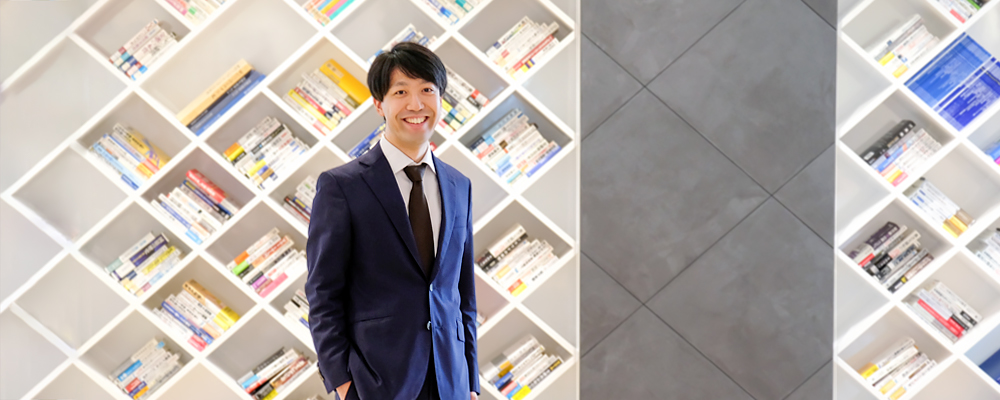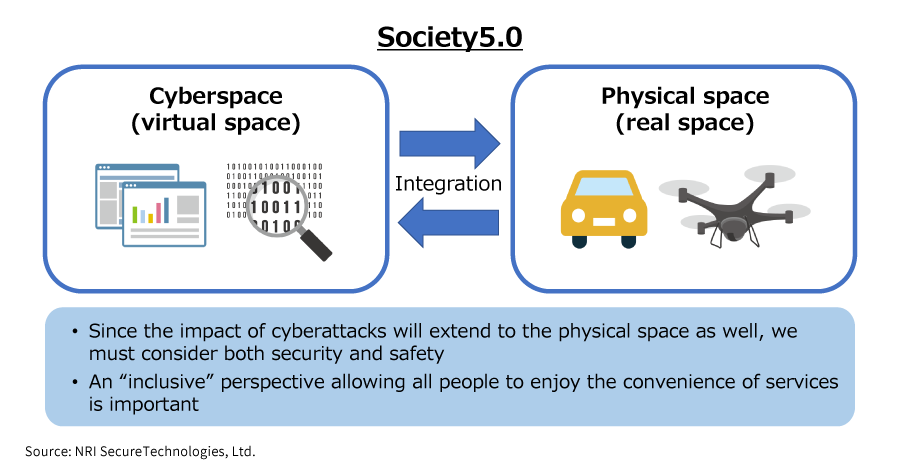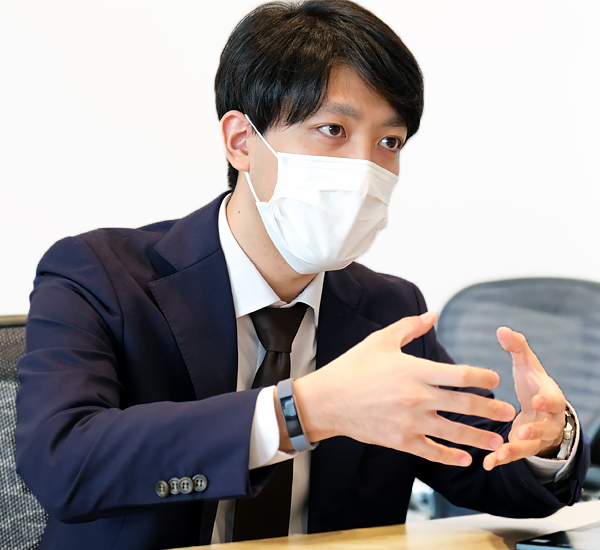
Society 5.0 and Cyber Security
IoT is connecting people and things and new value is being generated through the sharing of knowledge and information. Social problems are being solved by technologies like robots and self-driving cars that use AI. A society in which cyberspace (virtual space) and physical space (real space) are integrated and which balances economic advancement with the resolution of social problems is referred to as “Society 5.0”, the vision of the future that Japan has in its sights. However, new security risks may arise in this Society 5.0. We asked Takumi Kimura, an expert on trends in cyber security in the field of critical infrastructure, how cyber security will change in this society referred to as Society 5.0.
Future cyberattacks will impact physical space as well
“Society 5.0” is described as the vision of the future society that Japan should aim for in the “5th Science and Technology Basic Plan” on which a Cabinet resolution was adopted in 2016. It refers to a new society following hunter-gatherer society (Society 1.0), agricultural society (Society 2.0), industrial society (Society 3.0), and information society (Society 4.0), and is explained on the Cabinet Office website* as “a human-centered society that balances economic advancement with the resolution of social problems by a system that highly integrates cyberspace and physical space” through the use of technologies like IoT, AI, and robots.
A system that highly integrates cyberspace and physical space is described as being the tool for realizing Society 5.0. However, Kimura indicates that new security risks will arise in such a system.
“The initial threat of cyberattacks was basically limited to cyberspace. However, if cyberspace and physical space are integrated, the impact of cyberattacks will extend to physical space as well. In fact, there are many cases in which factory operations have been stopped as a result of a cyberattack. Further, in Finland, there was a case in which a system relating to building management was the subject of a cyberattack and the heating in a condominium complex was temporarily stopped.”
Kimura further warns that even more serious cyberattacks could occur.
“It was discovered that there is a vulnerability in a medical device called an insulin pump which is used to administer insulin and manage blood sugar levels for diabetic patients. If this vulnerability is taken advantage of, it could be possible to improperly administer insulin, which could lead to a life-threatening situation.”
Conventionally, “security” was what was used to protect the safety of virtual space, and this was distinguished from “safety” in real space. In the era of Society 5.0, however, Kimura explains that we need to think of the two together.

Security is important for realizing a human-centered society in Society 5.0
The 5th Science and Technology Basic Plan in which Society 5.0 was first advocated targeted the period from FY 2016 to FY 2020, and presently, the formulation of a new plan called the “Science, Technology, and Innovation Basic Plan” for 2021 onward is ongoing. Kimura stated that regarding Society 5.0 in this new plan, there is likely a focus on “inclusivity (enabling all people to enjoy the benefits of services as members of society)”.
“Looking at materials relating to the formulation of the Science, Technology, and Innovation Basic Plan, we can see there is an emphasis on “inclusivity”. In other words, this means that all people should be able to receive the advantages of Society 5.0 equally.”

Online classes and online medical examinations, which have come under focus as a result of the Covid-19 pandemic, are particular examples of services for which we need to emphasize the opportunity of all people to enjoy their advantages equally. Further, smart cities, which have come under focus in recent years, intend to realize the integration of physical space and cyberspace in cities where people live, and all people living in these cities must be able to enjoy their advantages equally. Kimura explains that if we are to focus on the perspective of inclusivity, it is important that anybody be able to use these services, and that these services be continuously usable.
“If services that are closely connected to physical space are subjected to a cyberattack, there will be people who suffer the impact in real space, which will lead to an undesirable situation from the perspective of inclusivity. I believe security plays an extremely large role in preventing this kind of situation and realizing a society in which all people can use highly convenient services safely.”
At NRI SecureTechnologies, we carry out various research surveys at the request of public agencies and are also involved in many instances of system design. On the basis of the knowledge and know-how we have gained as a result, we can support the development of systems that integrate cyberspace and physical space from a security aspect, and we can also analyze security risks starting at the service planning stage.
“What we aim for with Society 5.0 the realization of a human-centered society that balances economic advancement with resolution of social problems. Further, this approach will surely be effective as we live with Covid-19 and after Covid-19. At NRI SecureTechnologies, we will continue actively assisting in the assurance of security and privacy in order to support safe use of technologies that play a major role in this society.”
Profile
-
Takumi Kimura
* Organization names and job titles may differ from the current version.